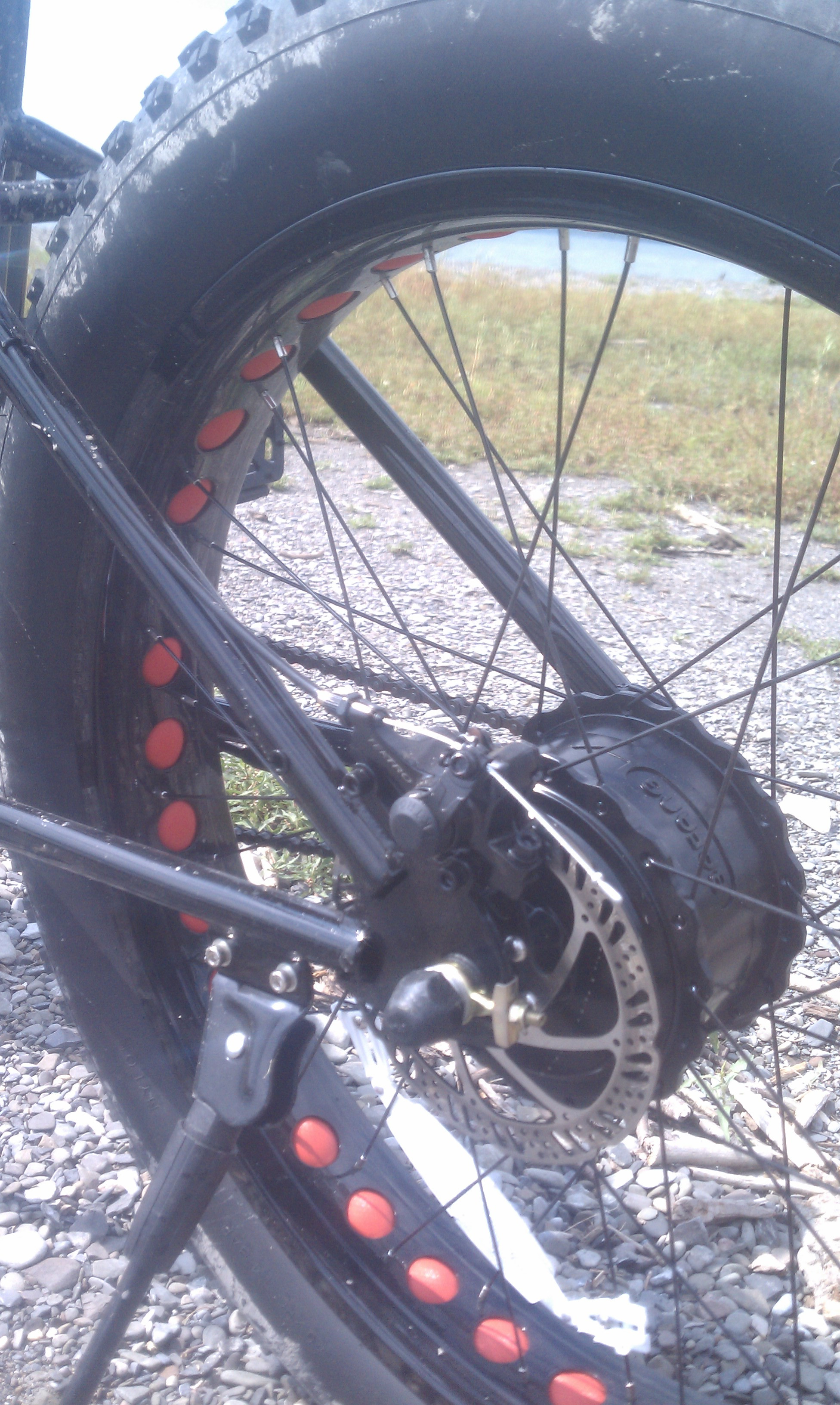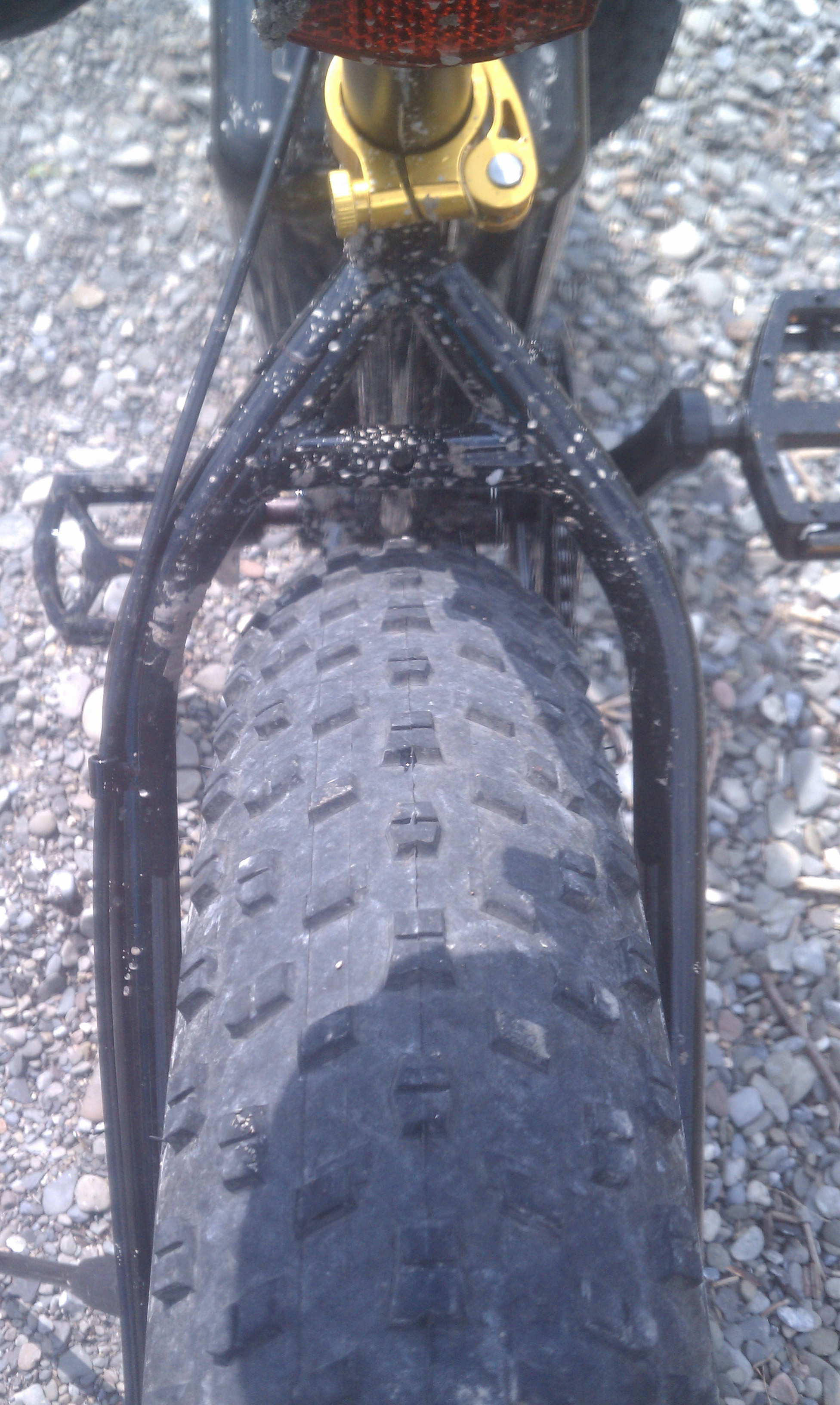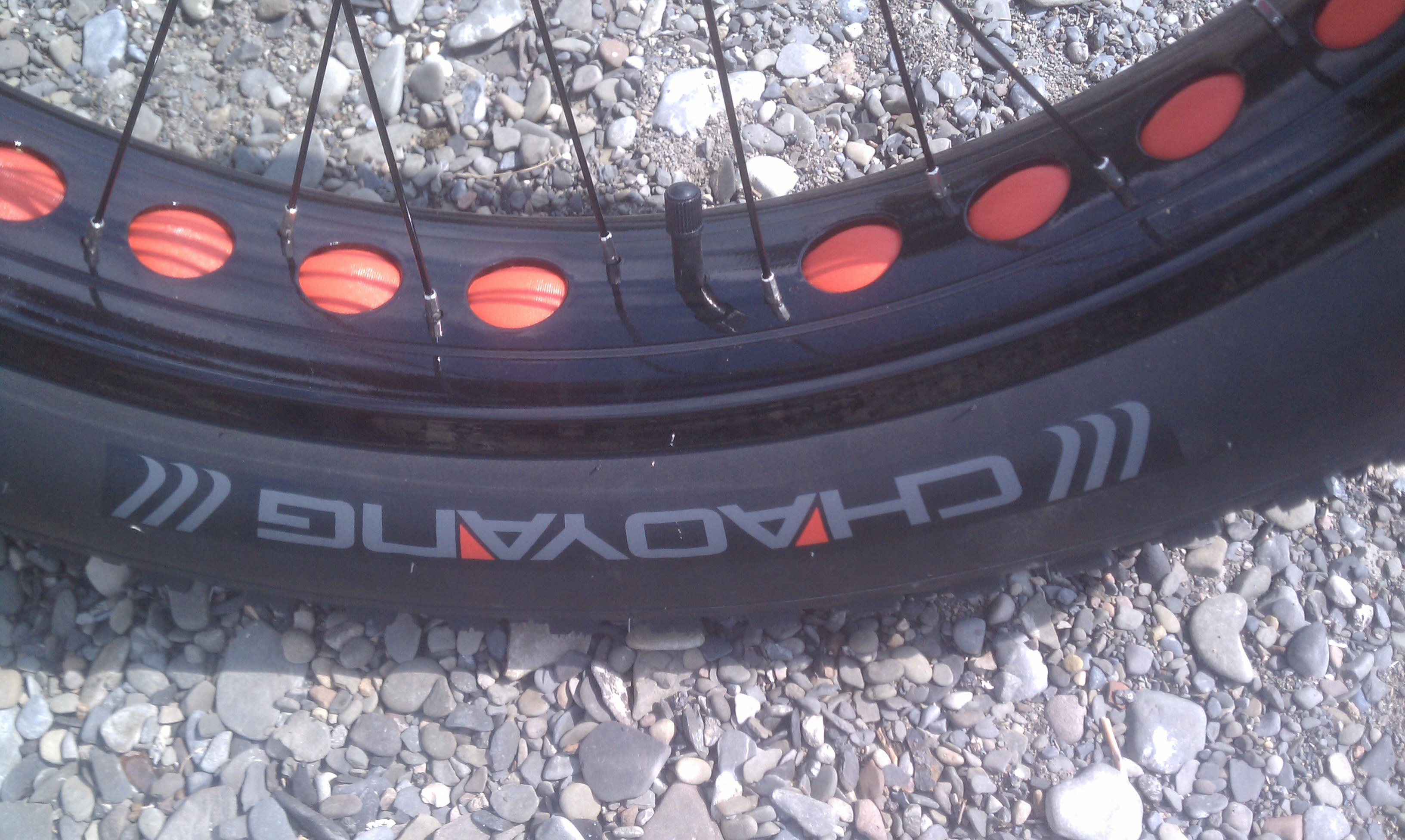The Sondors Electric Bike burst onto the scene with a promise: an affordable entry point into the world of e-bikes. Riding the Sondors ebike for the first time, the immediate impression is one of robust capability. Its bold styling hints at a powerful machine, and in many ways, it delivers on that initial visual promise. It certainly turns heads, projecting an image of adventurous capability, perhaps even more than the rider actually possesses. However, to truly understand the Sondors ebike, it’s crucial to consider its performance under specific conditions:
- Ensuring the battery is charged and the motor is engaged is paramount for any electric vehicle, and the Sondors is no exception.
- Its performance is notably optimized for level or downhill terrains, with limitations becoming apparent on softer surfaces or inclines.
 Sondors Electric Bike
Sondors Electric Bike
“Alfred, prepare the Bat Bike.” – This image captures the bold aesthetic of the Sondors electric fat bike, hinting at its robust and attention-grabbing design.
One of the first realities a rider encounters with the Sondors ebike is its substantial weight when unpowered. Attempting to pedal the bike with the motor off is a significant workout. This isn’t a bike designed for traditional cycling without electric assistance. Even minor inclines become challenging, demanding considerable effort. For many, especially those new to e-bikes or seeking effortless riding, a depleted battery might mean walking the bike rather than pedaling. The gearing is clearly optimized for motorized assistance, becoming comfortable only at speeds around 15mph or higher with pedal power alone. It’s evident that the Sondors ebike is engineered to be primarily motor-driven.
This ebike is clearly at home on beach terrain.
In contrast to bikes designed for unassisted pedaling, the Sondors ebike prioritizes motor-driven performance. Typical fat bikes intended for versatile riding often feature lower gearing to facilitate pedaling even without motor assistance. The significant difference in gear ratios between the Sondors and a standard fat bike highlights its motor-centric design philosophy. Weighing in at a substantial 59lbs, the Sondors ebike deviates from the principles of lightweight design and efficient gearing often favored in traditional bicycles.
 Bafang 350W Motor on Sondors Ebike
Bafang 350W Motor on Sondors Ebike
The 350W Bafang motor, a prominent feature of the Sondors electric bike, is noted for its robust construction and potential reliability. It is a geared hub motor designed to provide electric assistance for fat tire ebike models.
However, engaging the motor transforms the riding experience. The Sondors ebike incorporates a Pedal Assist System (PAS) that, while pedaling, subtly engages the 350Watt Bafang hub motor, adding an estimated 100Watts of assistance. This system provides enough power to maintain typical cycling speeds with comparable effort to a standard bicycle. For more immediate power, the throttle delivers a significant surge. From a standstill, activating the throttle produces a noticeable squeal from the motor’s clutch as it engages, rapidly bringing the bike up to speed. Once in motion, the motor performs effectively, easily reaching speeds of approximately 20 mph on level ground, and even faster downhill. It’s speculated that this particular Bafang motor configuration is optimized for speed rather than maximum torque, a factor that becomes apparent on inclines.
 PAS System on Sondors Ebike
PAS System on Sondors Ebike
The Pedal Assist System (PAS) magnets are strategically positioned near the chain-wheel on the Sondors ebike. This system is crucial for providing automated motor assistance when the rider pedals, enhancing the electric bike’s efficiency and rideability.
The Sondors ebike features a striking logo, reminiscent of designs associated with speed and dynamism.
The limitations of the Sondors ebike become more apparent when encountering hills. On slight inclines, less than 4% grade, maintaining momentum with pedal assist is manageable, albeit with noticeable effort. However, steeper inclines quickly reveal the bike’s struggles. Attempting to climb gradients of 8% or more demands significant rider input, diminishing the effortless “cheating” sensation typically associated with electric assist. For heavier riders, like those over 200lbs, steeper hills can bring the bike to a near standstill, regardless of pedaling effort. This limitation underscores the importance of considering terrain when evaluating the Sondors ebike. For areas with frequent or significant hills, a mid-drive system might be a more suitable choice, offering enhanced torque and climbing capability. Mid-drive motors, positioned at the bike’s bottom bracket, leverage the bike’s gears to provide more efficient power delivery, especially on inclines, a contrast to the hub motor design of the Sondors.
Off-road trails present another challenge for the Sondors ebike. Its performance on single-track trails is limited. Even minor inclines on such trails can cause the bike to lose momentum, necessitating dismounting and walking the bike. For riders seeking off-road adventures, lighter, more powerful mid-drive e-bikes are generally recommended for their superior handling and hill-climbing prowess on challenging terrains. The weight and motor characteristics of the Sondors are less conducive to technical trail riding.
The tires on the Sondors ebike, while visually similar to performance-oriented tires, contribute to the bike’s overall heft. The substantial rotational momentum of these tires is noticeable, even imparting gyroscopic effects at higher speeds. This sensation is reminiscent of heavier, less refined fat tire bikes. Tire choice significantly impacts the ride quality of fat bikes, and while the Sondors tires offer a good tread pattern, their weight affects handling and efficiency. Converting to a tubeless setup or using lighter inner tubes can reduce weight and improve ride feel, enhancing comfort and responsiveness. While tire pressure adjustments can influence handling, maximizing pressure to the recommended 20psi is advisable to optimize range and rolling efficiency.
 Tire Tread on Sondors Ebike
Tire Tread on Sondors Ebike
The tires of the Sondors electric bike feature a tread pattern designed for good traction and offer ample clearance for potential upgrades to even wider tires, enhancing its versatility for different terrains.
The Sondors ebike incorporates a plastic triangle housing for its electronics and battery. This housing, while aesthetically integrated, features basic weather sealing with rubber stoppers for access ports. One port conceals the power switch, while the other provides access for charging. While the design is functional, the small, unattached rubber plugs present a risk of loss or misplacement. An integrated tether for these plugs would improve practicality. In addition to the battery housing switch, a handlebar-mounted on/off switch adds a layer of convenience. However, the absence of a dedicated control to disable the Pedal Assist System limits customization of the riding experience. For riders desiring throttle-only operation, modifications might be necessary. Considering its original price point of $499 plus shipping, certain compromises in componentry and features are to be expected.
The Sondors ebike’s crowdfunding campaign generated significant attention and sparked considerable debate within the online e-bike community. Its emergence marked a turning point in the industry, highlighting the demand for more affordable electric mobility options. While the initial campaign and the persona of “Storm Sondors” (later revealed to be Ivars Sondors) were surrounded by controversy and scrutiny, the campaign’s success in raising substantial funds underscores the market’s appetite for budget-friendly e-bikes. Reports from crowdfunding industry media detailed challenges faced during the campaign, including financial discrepancies and operational complexities.
“Sondors bounced not one check – but three, all designated to cover campaign expenses.”
“The car he [Ivars] was driving had been towed (apparently the car was borrowed). He had no money to pay to get it off the impound lot, and he did not have a drivers license, so Ivars asked Jonathan, if he could help him out. Agency 2.0 picked up the tab and asked someone (with a valid drivers license) to drive the car off the lot. This all appeared a bit odd.”
The hidden charging port is protected by a rubber plug designed to keep moisture and debris away from the electrical connections of the Sondors ebike.
Overall Impression
Despite the controversies and limitations, the Sondors ebike achieved a notable feat: delivering an electric fat bike at an unprecedented price. While initial marketing claims regarding range and performance were arguably overstated, and the founder’s business practices faced criticism, Ivars Sondors successfully brought the bike to market. Real-world range, especially with throttle-heavy use, is likely to be less than 10 miles. However, with PAS and careful riding on level terrain, ranges closer to 20 miles, and potentially exceeding 30 miles, have been reported by some users. For comparison, a traditional, lightweight bicycle remains more efficient for unassisted pedaling than the Sondors ebike, even with PAS engaged. The advertised 50-mile range proved unrealistic for most riders under typical conditions. For those seeking extended range, aftermarket battery upgrades are available, offering increased capacity.
The use of a pseudonym, “Storm,” by Ivars Sondors during the campaign, and past business dealings, raised eyebrows. However, the viral success of the campaign was undeniable, driven by the promise of an affordable e-bike. Ultimately, Ivars Sondors navigated a complex path to bring his vision to reality.
 Hidden Kill Switch on Sondors Ebike
Hidden Kill Switch on Sondors Ebike
A hidden kill switch, a security feature on the Sondors ebike, is discreetly located to deter theft and provide an additional layer of security for owners.
While personal preferences might lead some to seek refunds or alternative e-bikes, the Sondors ebike does cater to specific user needs. Its weight and hill-climbing limitations might not suit all riders, but for certain applications, it presents a viable option.
Who is the Sondors Electric Bike Ideal For?
- Burning Man Participants: Its robust build and affordability make it suitable for the harsh environment of Burning Man, where durability and cost-effectiveness are prioritized over high performance. The fat tires are well-suited for the playa dust and provide a comfortable ride across the event grounds.
- Beach Cruisers: For leisurely rides on hard-packed beaches, the Sondors ebike excels. The battery housing offers some protection against saltwater spray, although soft sand remains challenging.
- Flat Terrain Commuters: For short, flat commutes under 8 miles, the Sondors ebike provides an affordable and stylish electric transportation option. Carrying the lightweight charger allows for convenient top-ups at destinations.
- Costume Riders and Casual Cruisers: Its distinctive appearance and electric assist make it a fun choice for casual riding around neighborhoods and events, appealing to those who prioritize style and ease of use.
Who Might Find the Sondors Electric Bike Less Suitable?
- Riders Dependent on Unpowered Pedaling: The Sondors ebike is not designed for efficient pedaling without motor assistance. Battery depletion will result in a challenging ride.
- Hill Climbers: Steep hills pose a significant challenge to the Sondors ebike due to its motor and gearing configuration.
- Singletrack Trail Enthusiasts: Its weight and handling characteristics make it unsuitable for serious off-road singletrack riding.
 Schrader Valves on Sondors Ebike Tires
Schrader Valves on Sondors Ebike Tires
Schrader tubes are standard at this price point for electric bikes, and the Sondors ebike rims and tire quality are noted as being surprisingly good for an entry-level model.
The long-term viability of Sondors as a company, considering potential legal challenges and financial obligations, remains an open question. The financial model of selling e-bikes at such a low price point presents inherent challenges to profitability and sustainability.
Despite these uncertainties, Sondors achieved something remarkable: democratizing e-bike access. The sheer volume of Sondors e-bikes sold in its initial year represents a significant portion of the e-bike market, demonstrating the power of affordability in driving adoption. For many first-time e-bike buyers, price is the primary deciding factor, followed by visual appeal. Sondors successfully tapped into this market segment by offering a complete e-bike package at a price comparable to the cost of individual e-bike components.
The single-speed freewheel is a simple and functional component of the Sondors ebike drivetrain.
Traditional e-bike retailers, often focused on higher-priced models, need to acknowledge the growing demand for affordable options. The future of e-bikes is increasingly pointing towards accessible and budget-friendly models that cater to a wider range of consumers. High-end, expensive e-bikes will likely remain a niche market. The focus is shifting towards practical, affordable electric mobility solutions.
Upgrading the Sondors Ebike for Enhanced Performance
The base Sondors ebike platform offers considerable potential for upgrades. For riders seeking more power, a direct-drive hub motor upgrade, offering significantly higher wattage, is a viable option. For even greater power demands, high-performance motor kits are available. These motor upgrades can dramatically increase the bike’s speed and hill-climbing ability. To fully utilize these more powerful motors, battery and controller upgrades are also recommended, providing higher voltage and amperage for increased performance.
Creating a High-Performance Sondors Ebike
For those willing to invest in substantial upgrades, the Sondors ebike can be transformed into a high-performance machine. Combining a powerful mid-drive motor kit with a robust internal gear hub and a high-capacity battery can create an e-bike capable of tackling steep hills and achieving high speeds. While these upgrades significantly increase the overall cost, they unlock the full potential of the Sondors platform.
 Sondors Ebike Logo
Sondors Ebike Logo
The Sondors ebike logo, prominently displayed, is a recognizable symbol of this affordable electric bike brand, though some riders might prefer a more understated aesthetic for their ebike.
For riders considering upgrades, overvolting the stock system with a higher voltage battery is a potential first step, although it carries risks to the controller and motor. A more comprehensive approach involves replacing the battery, controller, and motor to create a significantly more powerful and capable e-bike. Replacing the motor and upgrading other components can result in a substantial performance increase, offering more power and extended range.
Dealers and enterprising individuals could capitalize on the Sondors platform by offering upgrade kits tailored to fit the bike’s frame and components. These kits could address the limitations of the stock bike and enhance its performance and appeal. While hub motors have their place, for serious hill climbing and off-road riding, mid-drive motor systems offer superior performance. Integrating an internal gear hub further enhances versatility and gear range.
The seat post clamp on the Sondors ebike is praised for its quality and user-friendliness, a surprising highlight on a budget-oriented bike.
The electric fat bike market is poised for continued growth. However, for e-bikes to truly become mainstream, affordability and performance need to be balanced. While the Sondors ebike has its limitations, it represents a significant step towards making e-bikes accessible to a wider audience. For riders seeking an affordable entry into the world of electric fat bikes, particularly for flat terrain riding and casual use, the Sondors ebike offers a compelling option. However, for those with more demanding needs or challenging terrains, exploring alternative e-bike designs or considering upgrades to the Sondors platform is advisable. The era of affordable and capable electric fat bikes is dawning, and it’s up to consumers and manufacturers to shape its future.
Ride On.
Comments are closed on this article.
